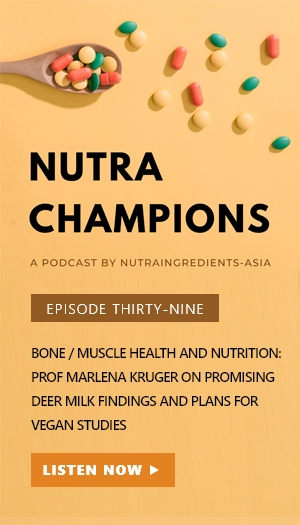Multi-nutrient inadequacies in ANZ linked to diet-related disease calls for food-based interventions – a2 Milk-funded study

The double burden of malnutrition and diet-related disease has been attributed to diets high in ultra-processed and discretionary foods with elevated sugar, saturated fat and sodium content, and insufficient dietary fibre.
A study funded by a2 Milk Company sought to determine the highest-priority nutrients or those with the highest potential to address this issue in ANZ
The study, which evaluated nutrient intake data obtained from recent ANZ nutrition surveys, found that 22 out of 31 essential nutrients consumed were below government-recommended levels in at least one demographic group.
Nutrient inadequacies were prevalent across all demographic groups, ranging from seven in children to 16 in males and older adults.
Although the number and specifics of nutrients varied between demographic groups, there was notable consistency in the nutrients found to be of highest importance across the board.
Within the total population, six nutrients — namely vitamin D, calcium, omega-3 fatty acids, magnesium, folate, and dietary fibre — were identified as primary nutrients of deficiency.
The researchers noted that this is due to not only overt inadequacy, but also increased needs and health priorities.
“The two major issues of malnutrition and diet-related disease are both independent and integrated — a nutrient inadequacy can affect normal physiology, but it might also contribute, either directly or indirectly, to the development of one or more diet-related diseases.
“For example, calcium had a relatively low number of health-priority associations, and the intake levels were comparable to recommended Nutrient Reference Values (NRVs). However, dietary inadequacy was high, with up to 94% not meeting the Estimated Average Requirement (EAR), thus likely to exacerbate calcium-related disease prevalence.”
Overall, the extent of nutritional inadequacies in ANZ was found to be high, both within each demographic group and the entire population.
“Our findings contribute to understanding the nutrients to prioritise in future-proofing the health of ANZ populations.
“Regardless of the underlying mechanism, increased intakes are needed for each one of the priority nutrients, and a focus on these nutrients in public nutrition policy and messaging, including the promotion of foods supplying these nutrients, is imperative.”
Boosting intake
Notably, vitamin D emerged as a priority nutrient for all demographic groups.
This finding is consistent with recent data showing that the prevalence of vitamin D deficiency and insufficiency are critically high and potentially increasing.
On the other hand, vitamin D was the sole priority nutrient for pregnant and lactating women, indicating that a targeted focus within this demographic group may be warranted.
Similarly, each demographic group was characterised by a unique set of priority nutrients, which means that specific attention should be paid to them to optimally support the health of people within that group.
For instance, five (zinc, folate, omeg-3 fatty acids, vitamin D, and magnesium) of six priority nutrients identified for males were associated with supporting anxiety and depression.
“Despite being identified as a health priority, anxiety and depression have been largely overlooked and/or under-reported in adult males. This accentuates the need to prioritise these nutrients,” the researchers said.
In addition to a focus on specific priority nutrients, diet- and food-based recommendations can help to support their intake.
“While folate and dietary fibre feature primarily in plant-based sources, the major dietary contributors of vitamin D and calcium are animal foods, while magnesium can be found in both. Some foods also provide more than one priority nutrient. For example, fatty fish are rich in omega-3 fatty acids and vitamin D, and dairy milk in calcium and magnesium.
“The identification and targeting of key foods providing priority nutrients may serve as an effective way to address the lowest-hanging fruit for both malnutrition and diet-related disease burdens.”
Concerns about changing diets
The current plant-based trend, coupled with increasing demand for meat and dairy alternatives, may lead to further decline in consumption of key nutrients.
“Concern has been expressed regarding the use of plant-based milk alternatives, except for fortified milk, due to nutritional inequivalence. In children, this substitution has been suggested to result in severe consequences for metabolic health.
“As calcium has been identified as having insufficient intake in ANZ, for which the major dietary source is dairy products, an increased shift from dairy milk to plant-based milk may further exacerbate these inadequacies.”
The researchers highlighted the need for a balanced approach, particularly when formulating dietary guidelines.
“Future research needs to focus on the identification and promotion of foods that contribute to priority nutrient intake, whilst also supporting sustainability efforts and taking cost into consideration.”
Each nutrient interacts and acts synergistically with other dietary nutrients, both within foods and inside the body following digestion and absorption.
Therefore, inadequacies in priority nutrients may impact the provision and activity of other nutrients, and subsequently health outcomes.
“While this study focused on the ANZ populations, the methodology adopted can be applied globally to determine and communicate nutrients for prioritisation and nutrition, a fundamental cornerstone for the reduction of diet-related disease,” the researchers concluded.
Source: Frontiers
https://doi.org/10.3389/fnut.2024.1370550
“Priority nutrients to address malnutrition and diet-related diseases in Australia and New Zealand”
Authors: Carlene S. Starck, et al



















